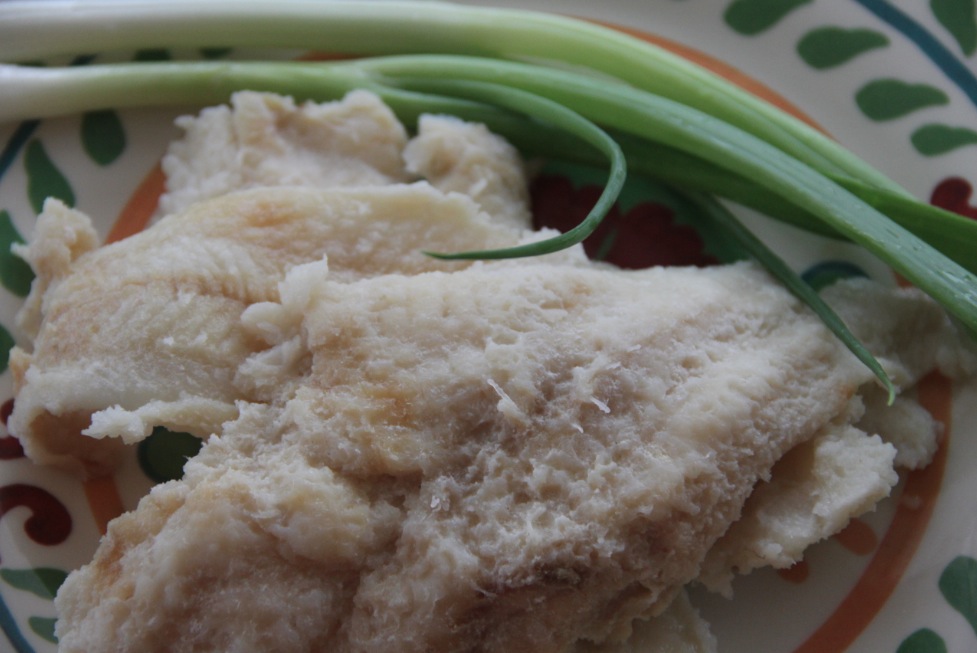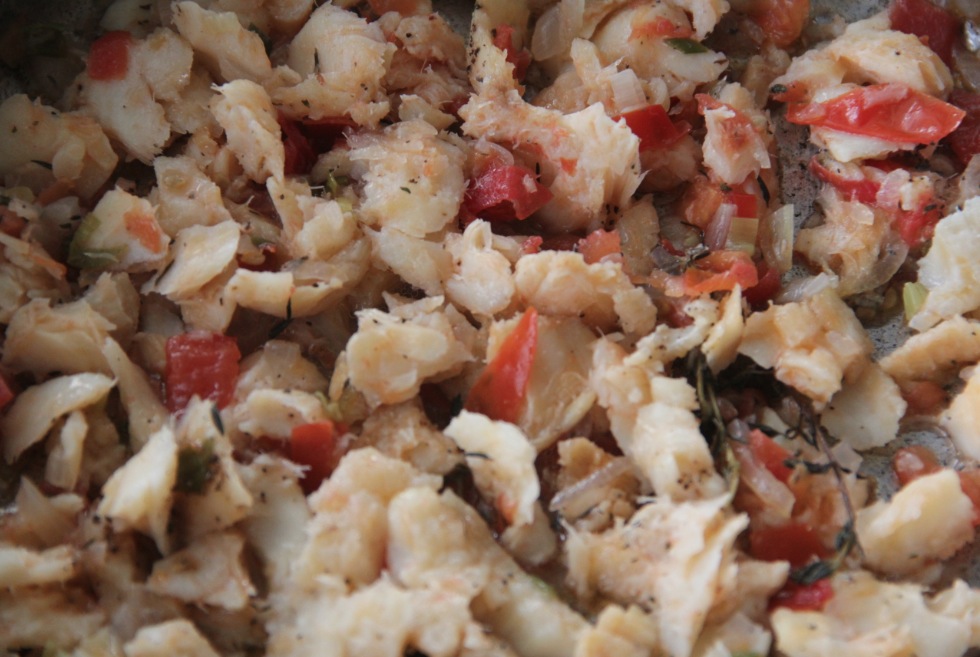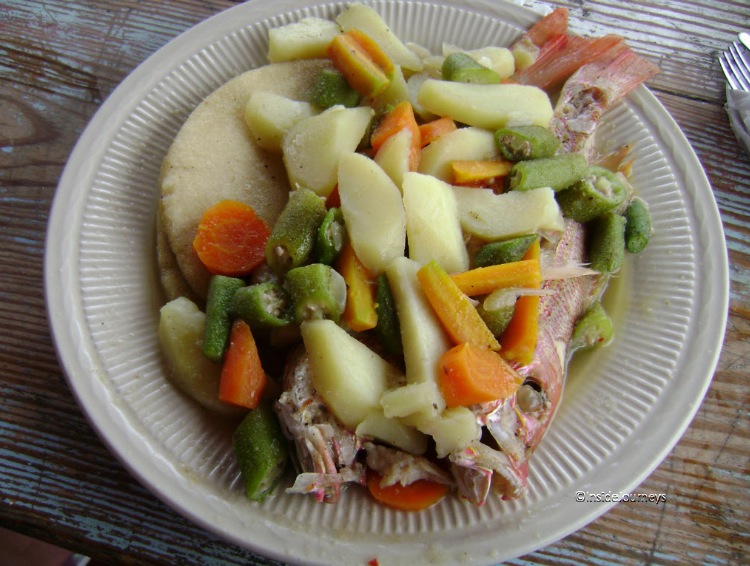Saltfish is so popular in Jamaica, it’s one of the two main ingredients in ackee and saltfish, our national dish. We eat it fried, roasted, baked, or in stews and at any meal of the day.

Salt or codfish came to Jamaica by way of Canada – Nova Scotia and Newfoundland, to be exact. Back then, planters were looking for food to feed the large population of enslaved Africans who worked on their plantations. It was for the same goal that they imported breadfruit from the South Pacific. Saltfish, as codfish is called locally, was traded for rum and molasses and shipped back to the island.
when saltfish could shingle house…
The first time I heard the expression, when saltfish could shingle house, I couldn’t understand what my mother was walking about. Why would anyone use saltfish to shingle their house? Years before saltfish was so inexpensive and commonplace, people thought jokingly that it could be use for everything, including as shingles for their houses.

Not so now as saltfish runs from $5 – 7 a pound. It is more expensive than meat and some other types of fish. To make it attractive, supermarkets sell it in pieces weighing about a half of a pound. You can buy even smaller amount in grocery shops.
Today, approximately 80% of the saltfish, usually hake or pollack, imported into Jamaica comes from Norway. Saltfish maintains its popularity, in part, because of its long shelf life. It also doesn’t require refrigeration. However, it is no longer inexpensive or looked down on as food for poor or lower class people. A staple of our diet, saltfish is on the menu of households in all strata of Jamaican society, and appears in a variety of dishes including ackee and saltfish, or cooked up with tomatoes, calalloo, cabbage, okra, butter beans, or found in fritters.


How to Make Saltfish and Tomatoes
Ingredients
1/2 pound saltfish
1 large tomato, chopped
1 small onion, chopped
2 stalks of scallion, chopped
1 sprig thyme
Black pepper, to taste
2-3 strips of Scotch bonnet pepper (optional)
Oil for frying
Directions
Soak saltfish in water overnight or bring to boil. Drain and add more fresh water and boil again to remove salt.
Chop onions, scallion and tomato; cut 2-3 strips from Scotch bonnet pepper and set aside.
Drain and add cold water.
Using your fingers or a fork, flake the fish and remove any bones.
In a medium skillet, add oil and allow to get hot. Saute chopped onions and scallions until transparent. Add pepper, then add tomatoes. Stir frequently until tomato flavors the oil.
Stir in the flaked fish. If there isn’t enough oil in the pan, add a little water.
Add black pepper and stir until the ingredients are fully mixed.
Lower the flame and let cook for 5 minutes.
Garnish with scallion or green peppers (sweet) and serve.
This can be paired with rice or ground provisions and can be eaten at any meal.
 Loading InLinkz ...
Loading InLinkz ...


















